Easter is a time of celebration and renewal observed by millions worldwide. Its religious significance—the resurrection of Jesus Christ—unites Christians, but celebrations for the bank holiday vary widely from country to country. From vibrant parades to solemn church services, each culture adds its own twist to the holiday. Whether it’s Easter egg hunts in the United States or Easter fires in Germany, every tradition reflects local customs, history, and faith.
At Remitly, we’ve created this guide to help you explore how Easter is observed across the globe, highlighting the diverse customs and rituals that make the holiday unique. Whether you’re curious about the festive spirit in Greece or the playful water fights in Poland, this guide offers a glimpse into the many ways Easter is celebrated worldwide.
Iconic Easter traditions
Christians across the world celebrate Easter with beloved traditions like decorating eggs, welcoming visits from the Easter Bunny, and sharing traditional foods such as hot cross buns and lamb. These traditions represent the holiday’s rich religious and cultural heritage.
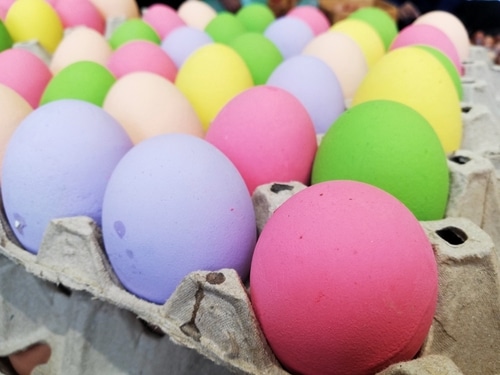
The significance of Easter eggs
Easter eggs symbolize new life and rebirth, reflecting the holiday’s message of Jesus Christ’s resurrection. In medieval Europe, eggs were forbidden during Lent, so people hard-boiled them to keep them fresh and eat them on Easter as part of the celebration.
Some people also dye their eggs. The tradition dates back to ancient times, but it gained Christian significance in medieval Europe. The eggshell came to represent Jesus’ sealed tomb, and cracking it symbolizes his resurrection. In Russia, Christian missionaries painted Bible scenes on Easter eggs to teach children the Easter story, turning egg hunts into a fun, interactive way to share the holiday’s meaning.
The role of the Easter Bunny
The Easter Bunny has a long history rooted in ancient springtime traditions of renewal and fertility. It traces back to the pagan celebrations of Eostre, an Anglo-Saxon goddess of spring and fertility, who is said to have turned a dying bird into a magical rabbit that laid eggs. This story inspired the Easter Bunny we know today.
In the 1700s, German immigrants brought the idea of an egg-laying rabbit, known as “Osterhase,” to America. Over time, it evolved into the cheerful figure that is central to many Easter celebrations today. Originally, the Easter Bunny acted as a judge, rewarding well-behaved children with eggs and fruits. Over time, this role softened, and it became a symbol of fun and festivity. Today, families continue to celebrate the Easter Bunny with egg hunts, where children search for hidden eggs filled with chocolates and candies.
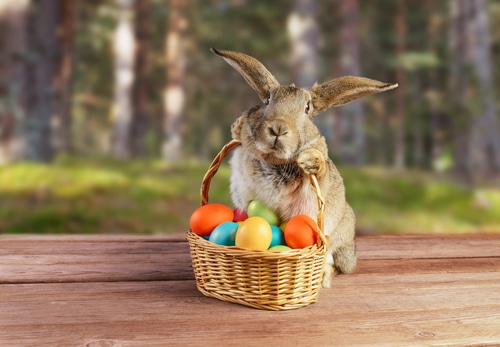
Celebration through food: hot cross buns and lamb
The most typical foods for Easter celebrations are hot cross buns and lamb.
- Hot cross buns: These sweet, spiced buns, marked with a cross, are traditionally eaten on Good Friday. The cross symbolizes Jesus’ crucifixion, while the spices inside represent those used in his burial. First recorded in 1733, hot cross buns remain a beloved Easter treat, often enjoyed warm and buttered.
- Lamb: Eating lamb at Easter holds deep symbolic meaning. It represents Jesus as the Lamb of God, connecting to the Jewish Passover tradition of lamb sacrifice. For Christians, serving lamb at Easter honors Jesus’s sacrifice and celebrates his resurrection, serving as a reminder of renewal, faith, and hope.

Global Easter celebrations
Easter is filled with traditions that reflect the unique cultures and histories of different places.
Easter in Europe: Italy, Greece, and Poland
Italy
Known as Pasqua in Italy, Easter is filled with unique traditions and delicious foods. Traditional dishes like pizza chiena (a savory pie with meats and cheeses) and pastiera napoletana (a sweet ricotta and wheat pie) are Easter favorites. Italians also enjoy Colomba, a dove-shaped Easter cake made with candied peel and almonds, symbolizing peace and resurrection. In Naples, pastiera symbolizes resurrection and renewal, while Florence celebrates with the Scoppio del Carro, a fireworks display believed to bring a good harvest. Fun Easter games also bring Italian communities together. In Fiorenzuola d’Arda, people play punta e cul, trying to crack each other’s eggs.
In the Marche region, the game tocciata involves tapping hard-boiled eggs to see whose stays unbroken. In San Leonardo in Val Badia, boys collect eggs from girls, and if they gather twelve, tradition says it could lead to marriage. In Southern Piedmont, the Canté j’evu tradition has young people singing door-to-door in exchange for eggs. During Holy Week, towns like Chianciano Terme hold solemn events such as the Giudeata, a procession that re-enacts the Passion of Christ.
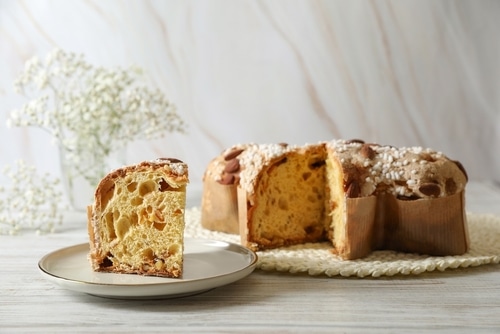
Greece
Greek Easter, also known as Pascha, is a deeply spiritual celebration that begins with Holy Week. From Palm Sunday to Holy Saturday, Greeks attend church services, processions, and traditional ceremonies. The highlight is the Midnight Resurrection Service, or Anastasi. At midnight, churches fill with candlelight as the faithful proclaim “Christos Anesti” (Christ is risen), celebrating the triumph of life over death.
One of the most meaningful traditions during Anastasi is the lighting of the Holy Fire, which is said to miraculously appear at the Church of the Holy Sepulchre in Jerusalem. This flame symbolizes Christ’s resurrection and divine presence. As it’s shared among worshippers, it spreads a sense of unity, joy, and hope.
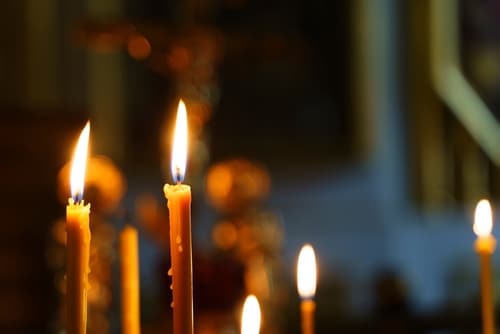
Poland
Easter in Poland follows the Roman Catholic calendar and kicks off with Palm Sunday or Niedziela Palmowa. Since palm trees don’t grow in Poland, people bring beautifully decorated willow branches or dried flower bouquets to church to honor Jesus’ arrival in Jerusalem.
This day marks the start of the Easter season, a time when families start cleaning their homes and preparing for the holiday. As Easter approaches, families put together special Easter baskets filled with symbolic foods like painted eggs (pisanki), sausage, bread, salt, and a lamb-shaped cake. These baskets are taken to church on Holy Saturday for a blessing, one of Poland’s most cherished traditions.
Easter Sunday starts with a big family breakfast. Before eating, everyone shares a piece of the blessed egg from the basket as a sign of unity and good wishes. The meal includes meats, eggs, babka cake, and Polish cheesecake (sernik), joyfully ending the lenten fast. Easter Monday, or Smigus-Dyngus (Wet Monday), is a day of playful fun, especially for kids. Water fights break out across the country in a light-hearted tradition meant to welcome spring and bring good luck for the year ahead.
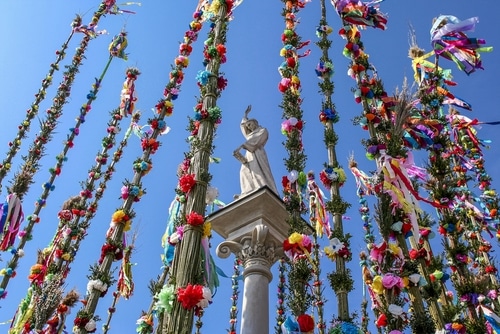
Unique customs in Australia and the Easter Bilby
In Australia, the Easter Bilby, a chocolate version of a native marsupial, is used to celebrate Easter. It has become a special alternative to the traditional Easter Bunny. This shift helps raise awareness about the environmental damage caused by rabbits. Introduced by Europeans, rabbits harm crops and native wildlife. In contrast, the bilby is promoted as a more fitting symbol for the holiday.
By celebrating the bilby, Australians support local wildlife and promote conservation during the season of renewal. Many people buy chocolate Easter Bilbies surrounding the holiday, with part of the proceeds going to wildlife protection programs. It’s a fun way to enjoy a sweet treat while helping to protect native species.
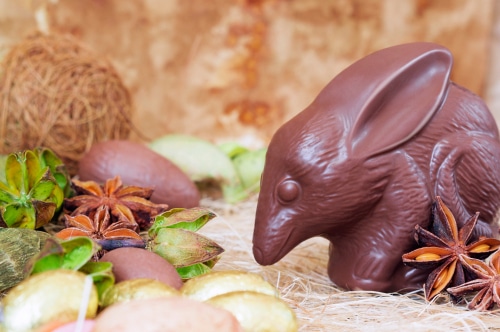
Easter in the US and its distinct practices
Easter in the United States is a big family celebration filled with fun traditions. One of the most popular activities is the Easter egg hunt, where families decorate eggs and then search for hidden ones filled with surprises. Another well-known tradition is the White House Easter Egg Roll, where kids roll eggs on the White House Lawn. Tickets for this event are distributed through a lottery.
Parades are another exciting part of Easter in the US. Big cities like New York and New Orleans host colorful events like the New York City Easter Parade and the French Quarter Easter Parade. These parades feature decorated floats, lively music, and people dressed as bunnies and other fun characters.
Food plays a significant role, too. The main dish is often honey-glazed ham or turkey, served with classic sides like deviled eggs. For dessert, many enjoy sweet treats like carrot cake or lemon cake. Easter baskets filled with candy and small gifts are a fun part of the holiday, especially with kids, blending the joy of gift-giving with the festive spirit of the day.
Religious significance
Easter is the most important celebration in Christianity. It focuses on Jesus Christ’s final days and ends with his resurrection.
Theological importance: Resurrection of Jesus Christ
At the heart of Easter is the belief in the resurrection of Jesus Christ. Christians believe that Jesus rose from the dead three days after his crucifixion. This event proves his divinity and offers the promise of salvation to believers. It is seen as the fulfillment of God’s plan, offering hope for eternal life and showing that Jesus overcame sin and death.
Holy Week observances: Good Friday, Holy Saturday, Easter Sunday
Holy Week begins with Palm Sunday and continues through Maundy Thursday, the day honoring the Last Supper of Jesus with his disciples.
- Good Friday is observed on the Friday before Easter. On this day, Christians reflect on his suffering and sacrifice. Church services often include readings about his passion, honoring the cross, and praying for others.
- Holy Saturday is a quiet day of waiting, marking the time when Jesus’s body lay in the tomb. It’s a day for prayer and reflection, leading to the Easter vigil. This special service, held after sunset, celebrates the shift from darkness to light, symbolizing the resurrection.
- Easter Sunday celebrates the resurrection of Jesus. Christians gather for joyful services, often at sunrise, to honor his victory over death.
These services include hymns, readings about the resurrection, and sharing the Eucharist. Easter Sunday concludes the three-day period known as the Paschal Triduum, which includes Good Friday, Holy Saturday, and Easter Sunday.
Easter’s connection to Lent and the rebirth theme
Easter is closely tied to Lent, a 40-day period (excluding Sundays) of fasting, prayer, and penance. Lent represents the 40 days Jesus spent fasting in the wilderness and helps Christians prepare for the celebration of his resurrection. It ends with Easter, which symbolizes spiritual renewal and new life. This journey, from self-reflection to joyful celebration, captures the Christian story of death and rebirth. It highlights the transformation made possible through the resurrection. Easter offers a message of redemption, fresh beginnings, and lasting spiritual promise.

How different cultures celebrate Easter
Easter is celebrated worldwide, with each culture bringing its own customs and traditions to the festivities.
Easter festivities in Spain and the Semana Santa traditions
In Spain, Semana Santa (Holy Week) is a powerful blend of religious devotion and cultural tradition, especially in cities like Seville, Malaga, and Cordoba. This week is marked by grand processions featuring pasos (carros/floats) that depict scenes from the Passion of Christ.
Costaleros (bearers) carry these floats and are followed by nazarenos (penitents) dressed in traditional robes. The processions fill the air with music and incense, attracting thousands of visitors each year. In Malaga, the celebrations have a lively and festive atmosphere, blending deep religious respect with local culture. The Spanish streets come alive with music, floral scents, and colorful displays, showcasing the city’s take on Semana Santa.
During Semana Santa, many Spaniards enjoy torrijas, a sweet bread soaked in milk and egg, then fried and sprinkled with cinnamon, similar to French toast.

Germany’s Osterfeuer and the Julian vs. Gregorian calendar dates
In Germany, Osterfeuer (Easter fires) are a cherished tradition symbolizing the arrival of spring and the resurrection of Jesus Christ. Large bonfires are lit on Easter Sunday or Monday as communities gather to celebrate renewal and the season of rebirth. Most Germans celebrate Easter based on the Gregorian calendar, which Western Christian traditions use. However, some Christian communities in Germany, especially Eastern Orthodox and Eastern Catholic groups, observe Easter according to the Julian calendar.
Because the Julian calendar is a few weeks behind the Gregorian calendar, Orthodox Easter often falls one to five weeks later than Western Easter. This means their related traditions, such as the Osterfeuer, may be celebrated on different dates.
Diverse Easter Monday and public holiday practices
Easter Monday holds different meanings across cultures and is often celebrated as a public holiday with differing customs.
- Germany and Austria: Easter Monday is a public holiday, celebrated with family gatherings, outdoor activities, and traditional events like egg races.
- United Kingdom: Once a popular day for picnics and outings, Easter Monday is now more low-key. It remains a public holiday in England, Wales, and Northern Island, but not in Scotland.
- Australia: Easter Monday is part of a four-day weekend and is often spent with family at barbecues or outdoor events. It rounds out the Easter celebrations alongside Good Friday and Easter Sunday.
- Canada: In provinces like Ontario, Easter Monday is a statutory holiday. Families gather on the day, and many communities host events to mark the close of the Easter season.
Easter traditions may vary by country, but they all share similar themes of hope, renewal, and joy. From Solemn rituals to playful games, Easter is a beautiful blend of faith and culture across the world. It reminds us that, despite our differences, we are all connected by life, our beliefs, and the promise of new beginnings.
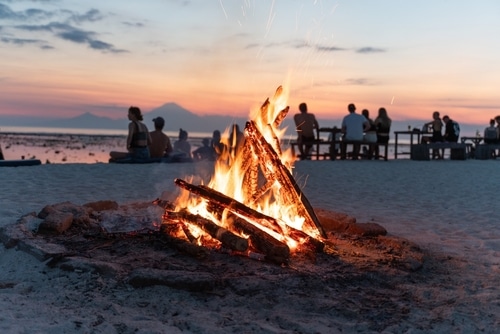
FAQs
Why does Easter change every year?
Easter changes yearly because it is based on the first Sunday after the first full moon following the vernal equinox (March 21). This Lunar-based calculation causes the date to vary between March 22 and April 25.
Is Easter celebrated at different times worldwide?
Yes, Easter is celebrated at different times due to the use of Gregorian and Julian calendars. Most of the Western world follows the Gregorian calendar, while some Eastern Orthodox churches use the Julian calendar, leading to different Easter dates.
Who recognizes and celebrates Easter globally?
Easter is celebrated by Christians worldwide, including Catholics, protestants, and Eastern Orthodox. It is a religious holiday marking Jesus Christ’s resurrection, and it’s observed culturally in many countries with various traditions like egg hunts and festive meals.